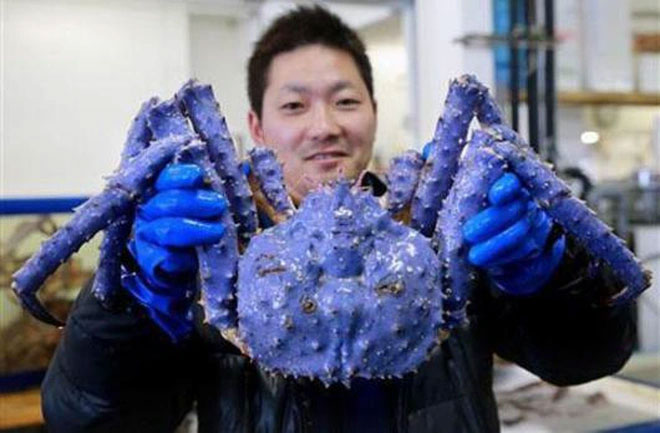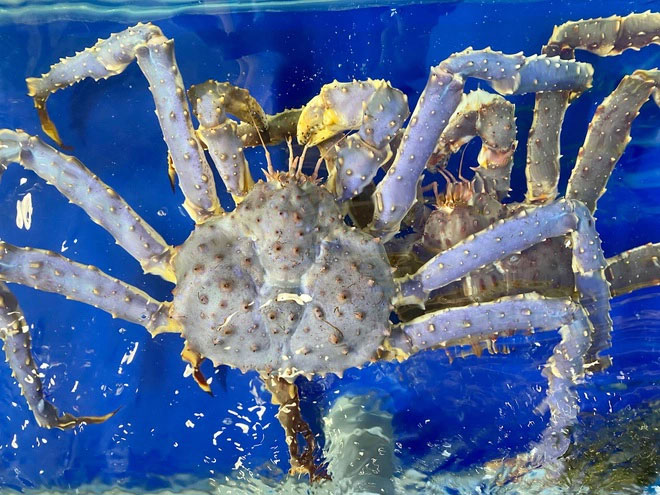The emperor crab is commonly recognized for its dark red or purple hues. However, there are unique exceptions, such as the blue-purple color.
It is known that blue-purple emperor crabs are an extremely rare phenomenon, with only three recorded cases worldwide. The last sighting of a blue emperor crab was in late 2014 in the United States.
The Cause of the Unusual Blue Color
According to experts from the Hokkaido Research Organization (Japan), the reason for the blue color in emperor crabs is due to dietary influences or mutations causing pigment deficiencies.
“The blue color of the emperor crab may result from an extremely rare genetic mutation,” said Scott Kent, a local researcher.

Blue-purple emperor crab. (Photo: Japan Today).
However, according to Oceana, blue emperor crabs are considered a separate species from the common emperor crab, being smaller in size and extremely limited in number in the wild.
They inhabit small populations scattered offshore in the eastern coast of Asia, near northern Japan and Siberia. The reason blue emperor crabs are difficult to catch is that they live in significantly colder waters compared to common emperor crabs.
Some documents suggest that the habitat range of blue emperor crabs has significantly narrowed due to global warming, resulting in the loss of their preferred cold water regions.
The exact number of these individuals in the wild remains undetermined, according to a report from 2019.
Are Blue Emperor Crabs Toxic?

A 2.8 kg blue-purple crab swimming vigorously. (Photo: Hoàng Gia).
For some animal species like snakes or frogs, possessing bright colors often signifies the presence of dangerous toxins. However, there have been no recorded cases of emperor crabs possessing toxins in their bodies.
According to the organization Quality Seafood, blue-purple emperor crabs are entirely edible. Some individuals found in Alaska and North America still retain the flavor of the original emperor crab, but are slightly sweeter.
However, they are less popular than red emperor crabs, as they contain less meat in their legs and claws. Red emperor crabs are also easier to catch as they can be found in shallower waters.


















































